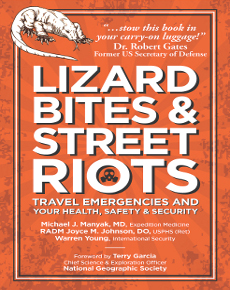Full Article:
Most international travel from the U.S., flights depart late afternoon or early evening with scheduled arrivals the following morning. By the time you check into your hotel, you may be exhausted from your trip! What a wasted day if you have to spend it in bed, trying to recoup from that crowded flight!
Here are a few simple tips to combat jet-lag, helping you to arrive refreshed and ready to go out and enjoy your adventures!
Low cabin humidity and dry air are the major contributors to jet-lag fatigue. Combine this with re-circulated air and oversold flights can expose one to bacteria and viruses that thrive in such dry conditions.
Preparation:
- Drink plenty of water a few days prior to departure.
- Take long baths with Epsom salt – hydrates the body. Water should be tepid and not hot.
- Plenty of sleep - try to get as much sleep at night and if possible a nap in the afternoon.
- Take vitamins – and consult your doctor prior to departure if you have medical issues that need to be considered. You may want additional antibiotics to have on hand for preventive measures.
During Flight:
- Water, water, everywhere! Always plan on drinking as much water during the flight as possible. Once you proceed through security, purchase a water bottle and have the flight crew re-fill when needed. Stay away from all alcoholic beverages, sodas and even coffee for these beverages are very dehydrating.
- Take a “walking break” through the aisles as this can be very beneficial for your circulation. When in your seat, rotate your ankles and legs which aid in circulation. Most airlines in their flight magazine have Instructions as to these beneficial exercises which help prevent thrombosis.
- Invest in a neck pillow - this will keep your head propped up and aid in sleeping. Have a shawl or warm neck scarf to keep warm should you be seated in a draft area on the aircraft. You will not always have control over the air flow.
- Bring a small spray bottle and add a few drops of lavender oil. Can be used as overall misting for your face and hands. (Lavender oil also anti-bacteria). There are also many eye and face mists on the market that will refresh you.
After Flights:
- One of the most important things to do after a flight is to flush the nostrils with water. You can use nose sprays but better are the nettle kettle or “Nasoline” products wherein you use sea salt water to flush the nasal passages. This will prevent colds, flu and any bacteria you may have picked up from cabin air.
- If you suffer from allergies, be sure you take your meds prior to departure. In addition to washing your hands, the nasal flush is the most important procedure you can do to prevent illness.
We all look forward to future travel on the new 787 aircraft that many US carriers will be adding to their fleets this year. New technological advancements, as to construction of this new generation aircraft, will make long haul travel much more pleasurable. With the cabin humidity more normal and less drying, you will arrive at your destination more refreshed and ready to go!
July 5, 2023








